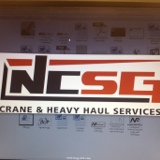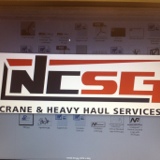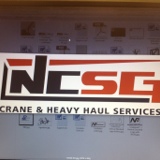Information
-
Document No.
-
Client / Site
-
Conducted on
-
Prepared by
-
Location
-
Personnel
-
Hazards are rated as:
Class A (a condition or practice likely to cause permanent disability, loss of life, extensive damage or negative environment impact) must be corrected immediately
Class B (a condition or practice likely to cause temporary disability or disruption to property or environmental damage) must be corrected within 14 days
Class C (a condition likely to cause minor injury or damage) must be corrected within 14 days
Class D (housekeeping issues) must be corrected within 30 days
Hallways Entrances and Stairways
-
Clear and unblocked
-
Stairwells well lit?
-
Handrails and handholds in place?
-
Is emergency lighting availible?
-
Comments:
Reception Area
Floors
-
Loose material or debris?
-
Floors slippery or wet?
Lighting
-
Are the areas well lit?
-
Are bulbs missing?
-
Are there areas that are dark?
Equipment
-
Furniture and equipment is safe?
-
Worn or badly designed chairs?
-
Sharp edges on cabinets or desks?
-
Poor ergonomics? (height if chair, keyboard elevation, etc.)
-
Crowding?
-
Extension cords overused?
-
Electrical cords etc creating tripping hazard?
Material Storage
-
Are materials neatly and safely piled?
-
Are large and heavy objects stored on lower shelves?
-
Are passageways and work areas clear of o obstructions?
-
Are desk and file drawers kept closed when not in use?
-
Are there any tripping hazards?
-
Are paper and waste properly disposed of?
-
Are office accessories in a secure area?
-
Are materials stacked on desks or cabinets?
-
Are file cabinet drawers overloaded?
-
Are file cabinets loaded with the heaviest items in the bottom drawers? l
-
Is the first aid kit clearly marked and accessible?
-
Comments
Offices/Workstations
-
Is there loose material worn carpeting or debris?
-
Are the floors slippery, oily or wet?
-
Are Areas well lit?
-
extension cords use extensively?
-
Electrical cords tripping hazard?
-
Materials safely and neatly piled?
-
Large and heavy objects stored on lower shelves?
-
Passageways clear of obstructions?
-
Drawers closed when not inn use?
-
Is the furniture safe? (no sharp edges, chairs in good condition, ergonomics, etc.)
-
Office accessories secure?
-
File cabinets overloaded?
Copier Stations
-
Is there loos material, worn carpeting or debris?
-
Are the floors slippery, oily or wet?
-
Is the area well lit?
-
Is the copier functioning correctly?
-
Are extension cords used extensively?
-
Are electrical cords creating tripping hazards?
-
Are materials neatly and safely piled?
-
Are large and heavy items stored on the lower shelves?
-
Are passageways clear of obstructions?
-
Are drawer and cabinets closed when not in use?
-
Are there any tripping hazards?
-
Are materials stacked on desks or counters?
-
Are counters clean and safe?
-
Are there any controlled substances (WHMIS)?
-
If yes: are they properly labelled?
Washrooms
-
Is there loose material, debris or worn flooring?<br>
-
Are the floors slippery, oily or wet?
-
Is the area well lit?
-
Are supplies adequate? (toilet paper, soap, etc)
-
Are there any controlled products (WHMIS)
-
If yes: are the products properly labelled?
-
Comments
Electrical Closet and Janitorial Closet
-
Is there loose material worn flooring or debris?
-
Are the floors slippery wet or oily?
-
Are materials neatly and safely piled?
-
Are large and heavy objects stored on lower shelves?
-
Are passageways or work areas clear of obstructions?
-
Is the key available in case of emergency?
-
Are there any controlled substances (WHMIS etc.)
-
Are they properly labelled?
-
Are storage shelves overloaded?
-
Comments
Emergency Equipment
-
Is all fire control equipment inspected and certified?
-
Is emergency lighting in place and regularly tested?
-
Are first aiders available in the area?
-
Are first aid kits available and stocked?
-
Comments
Lunch Room
-
Are food prep areas clean?
-
Is the safety board area neat and prominently marked?
-
Is the general notice board current?
-
Is noise protection availible?
-
Are there 'NO SMOKING' signs posted?
-
Is the lunch room well lit and adequately ventilated?
-
Is there a clear exit/access?
-
Is the lunchroom free of hazards? (worn frayed cables, poorly maintained appliances or overloaded plug ins or power packs)
-
Are there any cords that employees could trip over?
-
Is there loose material, worn flooring or debris?
-
Is the floor slippery, wet or oily?
-
Are the waste disposal facilities emptied and contents removed for disposal?
-
Are there any controlled substances (WHMIS), etc)
-
If yes, are they properly labelled?
Multi Purpose Rooms - Meeting Rooms
-
Is there loose material worn flooring or debris?
-
Are the floors slippery, wet or oily?
-
Is the area well lit?
-
Are bulbs missing?
-
Is necessary equipment in working order?
-
Are extension cords over used?
-
Do cords create a tripping hazard?
-
Are materials neatly and safely piled?
-
Are storage shelves overloaded or beyond their rated capacity?
-
Are large or heavy objects stored on the bottom shelves?
-
Are passageways and work areas free of obstructions?<br>
-
Are materials stacked on counters or desks?
-
Are drawers and cupboards closed when not in use?
-
Are office accessories in a secure place?
-
Are file cabinet drawers overloaded?
-
Are there any controlled substances? (WHMIS etc.)
-
If yes; are they properly labelled?
-
Comments
Air Handling System
-
Is the temperature consistent?
-
Is the temperature at a comfortable level? (between 19 and 22 degrees Celsius)
-
Is the system free of contamination? (dust, fumes, etc)
-
Comments
Other
-
Comments








